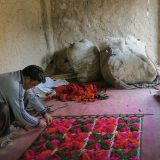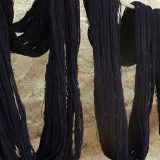Blog ~ 100th post

Through the last 99 posts we have toured around alleys, bathed in shadows of vernacular streetscapes, indulged in numerous off the hook conversations over unique flavors of chai-biscuit with the real faces behind the splendors of Indian crafts, let ourselves reign the heights of motion inertia while travelling in jugaadu local transport which was nothing less than a few square feet of space engineered to transport an entire village and documented the euphoric delight of all the aforementioned through a myriad of pictures and prose. This being the 100th post becomes an attempt to reveal some hidden nitty-gritty’s of certain selected crafts and a reason to celebrate the indigenous wisdom of the Indian craftsman.
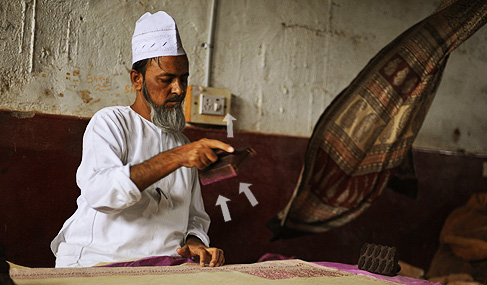
Have you ever been intrigued by the holes in the printing wooden blocks? So, when your next rendezvous at the hand block-printing workshop leaves you wonder struck about the apertures on the edges of these blocks, surprise yourself no further. These perforations are meant for the free passage of air through the block when the printer’s hands stamp it with a thrust onto the fabric-clad table.

Besides, they also allow release of excess printing paste, making the edges of the printed pattern sharp. Wooden block made by a master will invariably have a network of horizontal and vertical airshafts within the thickness of it.
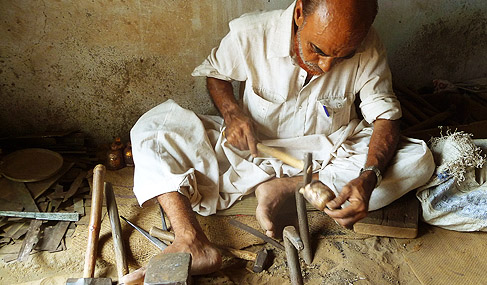
The sound that springs out of a bell echoes its maker’s skill. This sound depends on three important factors: the size and shape of the bell’s body and of the wooden strip hanging within, the girth of the bell’s bottom rim. Constant hammering by the hand along the rim of the bell creates dents, which contribute to the pitch of the sound as desired.
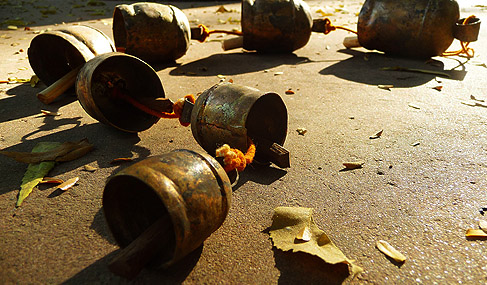
It is a constant play of the ear-hand co-ordination that gives birth to these unique cattle bells (locally called as Ghantadi in Kutchh), designed to identify specific animal.
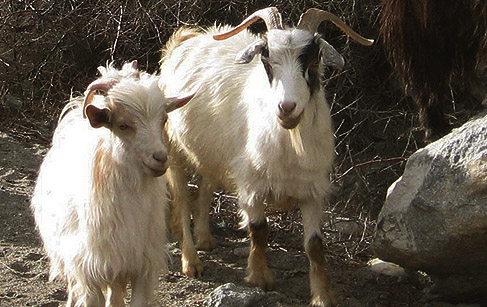
Pashm or Pashmina is the finest wool found on an indigenous species of mountain goat found in the high altitude region of the Himalayas. Traditionally bred in these unique conditions of the terrain by the nomadic tribe Changpa of the Changtang plateau. The fine winter undercoat of this goat is known for its exquisite softness and alluring luster.
Hence, it does not come as a surprise that shawls made of this fiber is valued as one of the most exquisite in the world. Only when the wool comes from the goats of this region can the shawls be called a genuine ‘Pashmina’, not otherwise.
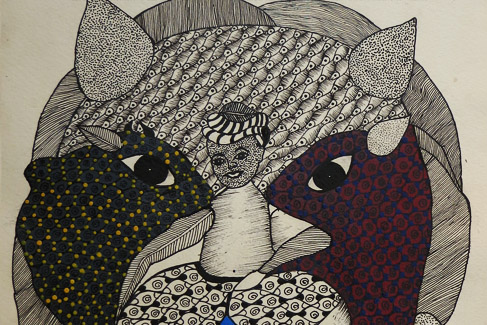
Imagine all the dots and dashes of the universe being tamed to the tune of unique artistic overtones of the Gond artists, till they settle down within the frames of their exclusive symphonies. Well! why challenge the limits of imagination when one can witness the exceptional patterns emerge on the canvas of the Gond artist. Each one of these visual-fixations are depictions of gods and goddesses exemplifying grace and splendor, elegantly illustrated flora and fauna and other things inspired by everyday life, but rendered in individual and original signature styles of the artist.

The signature not only lies in the unique imagination each one of them possesses but also in the units of patterns he chooses.
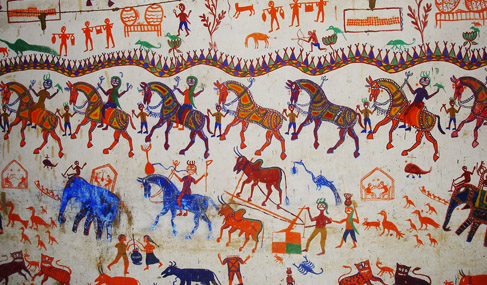
It is believed that around 11th century A.D when traders from north had established an important business center in Baruch, navigation around the mysterious & life-threatening terrain had become a challenging task. The native tribes used this opportunity to benefit from their skills by making a map full of codes to escort the traders through the region. Consequently, the seven hills came to be represented as seven horses. These traders also painted the same maps on the walls of their houses. However, the practice could not continue for long and these discreet maps within paintings became an art form popularly known as ‘Pithora Paintings’
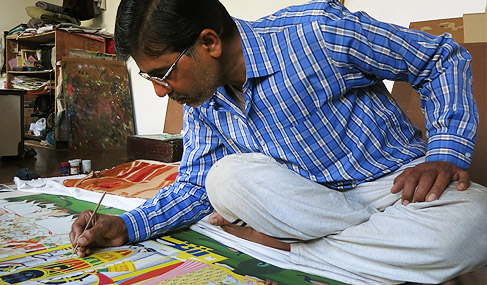
Even the most perfect creations benefit from the orders of incoherency. The traditional Pichwai paintings are considered as offerings to lord Srinathi ji or Lord Krishna. Artisans with ingenious skill sets induce intentional flaws in the painting. As the story goes, in the paintings of the Ram Darbar (the court of king Rama), Hanumanji’s tail appears to be missing. In another, both feet of Lord Srinathji are oriented in one direction. While the popular belief ascertains that flaws are a way devoted painters save their beloved God from the evil eye, it comes as quite a revelation that the conscious errors are infact an artist’s secret seal of authenticity so that these paintings if replicated, can be identified from the original.
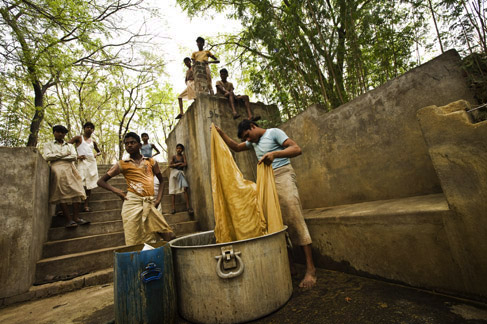
The secret of a beautiful painting does not lie merely in the artistry. In the relentless pursuit of impeccability, the block printers in Bagh ensure that the cloth which is destined to bear the print is prepared beforehand by carefully rinsing it in a certain solution. The secret sauce being Goat droppings and castor oil mixed in a certain proportion. When the fabric is tapped with feet, heat is generated, making the fiber more absorbent to serve as better canvas for the block printing.
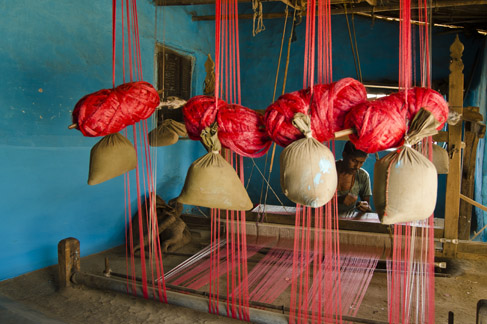
The next time you run your hand along the creases of fine silk, do spare some thought for the silkworms who may have martyred their life for this luscious fabric!
The male silkworm has a moustache and the female is blessesd with a broad posterior. Prior to the organized mating session, the female worms’ wings are detached and she is allowed to interact with the male in the pot. A whopping 150 eggs may arise out from a single matrimonial worm union. While the females do not survive after the mating, the same sets of male worms are used for 3 to 4 times afterwards.
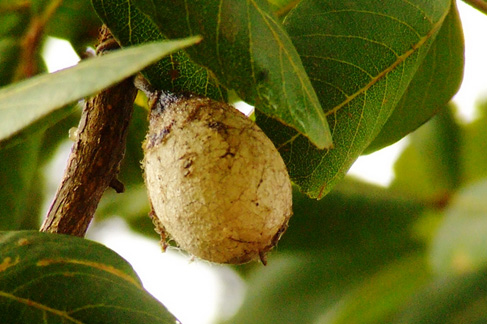
After 8 days of observation in prescribed centers, these eggs are given away to the farmers for rearing and extracting silk yarn.
Countless more encounters with an awe inspiring, amusing, and unbelievable India remain enclosed within the pages of our journals along with leaves, colors, threads and some folk lore that carelessly slipped in. Countless more narratives remain to be discovered even as they remain camouflaged in the wilderness of the local artscapes, alluring our sensitivity every passing moment. Gaatha is a pledge to bring back the fading demeanor of each one of these anonymous tales.

~

